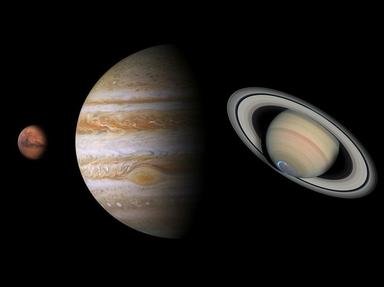Quiz Answer Key and Fun Facts
1. Venus is the Roman goddess of love. Her Greek counterpart is Aphrodite, but what is the Babylonian counterpart?
2. Venus's alchemical symbol is also the female symbol. This symbol also symbolizes a day (Friday) and a metal, which?
3. The core of Venus is ~3000 km in radius. It is most possibly partly molten and consists of:
4. The atmosphere of Venus is very thick. The pressure on the surface is ~90 atmospheres. The inner layers (0-40 km.) consist mainly of carbon dioxide. The outer layers (40-60 km.) are clouds of sulphuric acid drops. Do these drops rain down onto the surface?
5. Which is NOT a surface feature of Venus?
6. Venus's magnetic field is almost as strong as Earth's.
7. Venus's movement is a bit weird. Which statement is NOT true?
8. Venus is the brightest object in the sky after Sol and Moon. Therefore it's been known since prehistoric times. For a long time it was thought to be two different objects. What did the Greeks originally call them?
9. Since Venus orbits Sol within Earth orbit, Venus from time to time can (from Earth) be seen passing in front of Sol. This is called transit. These transits are important astronomical events. The first evidence of Venus's atmosphere was found because of a transit. When was this?
10. Venus has been visited by human spacecraft more than 20 times. What spacecraft was the first to touch the surface of Venus?
Source: Author
labich
This quiz was reviewed by FunTrivia editor
crisw before going online.
Any errors found in FunTrivia content are routinely corrected through our feedback system.

